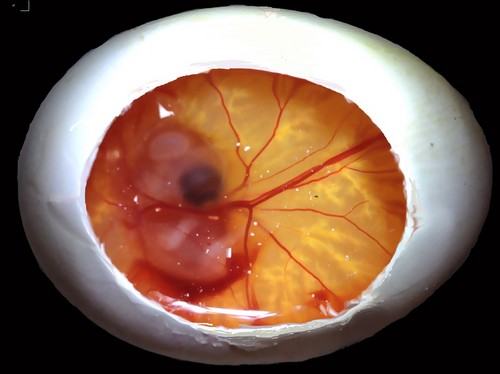Under the background of global warming, how animals deal with temperature change has attracted increasing attention from both scientific and public communities. Adult animals may behaviorally avoid unfavorable thermal environments. How would embryos of birds and reptiles respond to temperature change inside eggs? Traditionally, embryos are thought to be passive in their response to environmental changes. Recently, Wei-Guo Du and his team from the Institute of Zoology, ChineseAcademy of Sciences challenged this view and found reptile and bird embryos actively cope with unpredictable temperature challenge. In a Biology Letters paper (Zhao et al., Biology Letters, 2013, 9: 20130337), the researchers found that if one end of an turtle egg is warmer than the other (as often occurs in natural nests), the embryo within that egg will move towards the hot-spot under cool conditions, but move away if the hot-spot becomes too hot. This repositioning of embryos is an active process, because live embryos move toward a heat source, whereas dead ones do not. In an American Naturalist paper (Li et al., American Naturalist, 2014, 183: 445-451), this team further demonstrates that this fascinating behavior of embryos is widespread not only in turtles, but also in other reptiles like snakes and crocodiles as well as birds. However, such behavior is not universal, occurring in embryos within large but not small eggs (notably most lizard eggs). In a Biological Reviews paper (Du and Shine, Biological Reviews, 2014, doi: 10.1111/brv.12089), they identify three main routes that embryos use to deal with unpredictable variation in nest temperatures. Extreme temperatures can be avoided (e.g., by moving within the egg); can be tolerated (e.g., by entering diapause); or the embryo can adjust its physiology and/or developmental trajectory in ways that reduce negative effects of extreme thermal conditions (e.g., by acclimating). Remarkably, animal can actively deal with their environment at earlier stages (embryos) of life cycle than we traditionally expected. 
Chicken embryo, Taken by Teng Li 
Potential pathways by which an embryo may be able to respond to unpredictable thermal challenges within the nest, in reptiles and birds.
|


